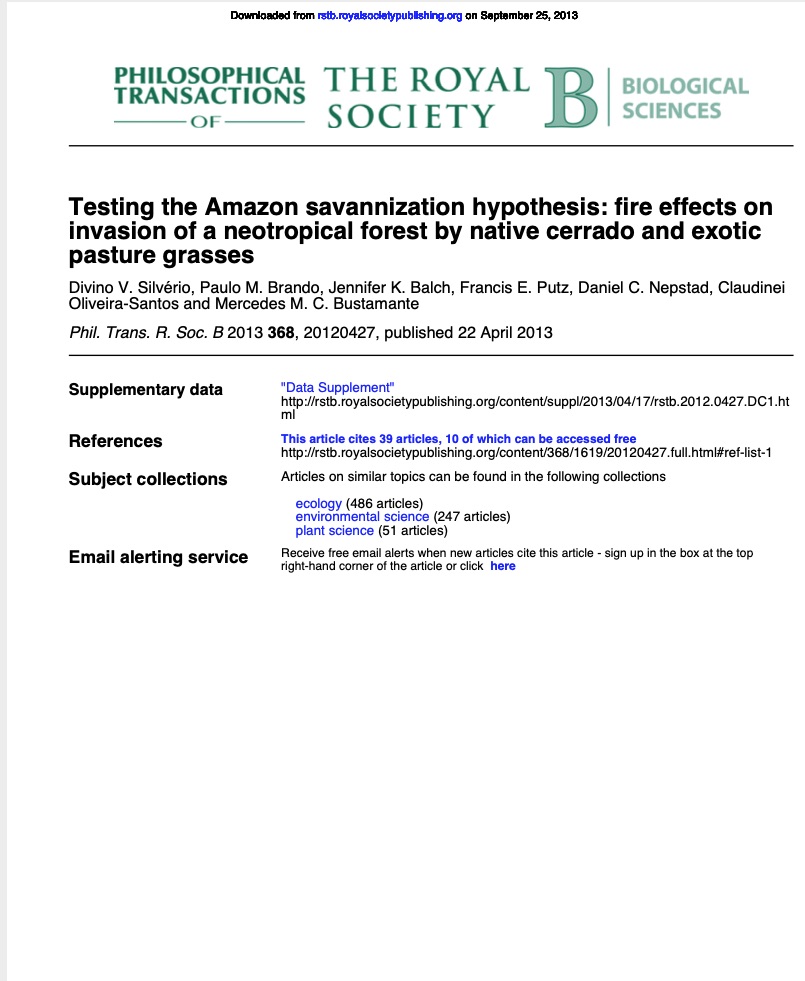PUBLICATIONS
2013
Feb
Changes in climate and land use that interact synergistically to increase fire frequencies and intensities in tropical regions are predicted to drive forests to new grass-dominated stable states. To reveal the mechanisms for such a transition, we established 50 ha plots in a transitional forest in the southwestern Brazilian Amazon to different fire treatments (unburned, burned annually (B1yr) or at 3-year intervals (B3yr)). Over an 8-year period since the commencement of these treatments, we documented: (i) the annual rate of pasture and native grass invasion in response to increasing fire frequency; (ii) the establishment of Brachiaria decumbens (an African C4 grass) as a function of decreasing canopy cover and (iii) the effects of grass fine fuel on fire intensity. Grasses invaded approximately 200 m from the edge into the interiors of burned plots (B1yr: 4.31 ha; B3yr: 4.96 ha) but invaded less than 10 m into the unburned plot (0.33 ha). The probability of B. decumbens establishment increased with seed availability and decreased with leaf area index. Fine fuel loads along the forest edge were more than three times higher in grass-dominated areas, which resulted in especially intense fires. Our results indicate that synergies between fires and invasive C4 grasses jeopardize the future of tropical forests.

